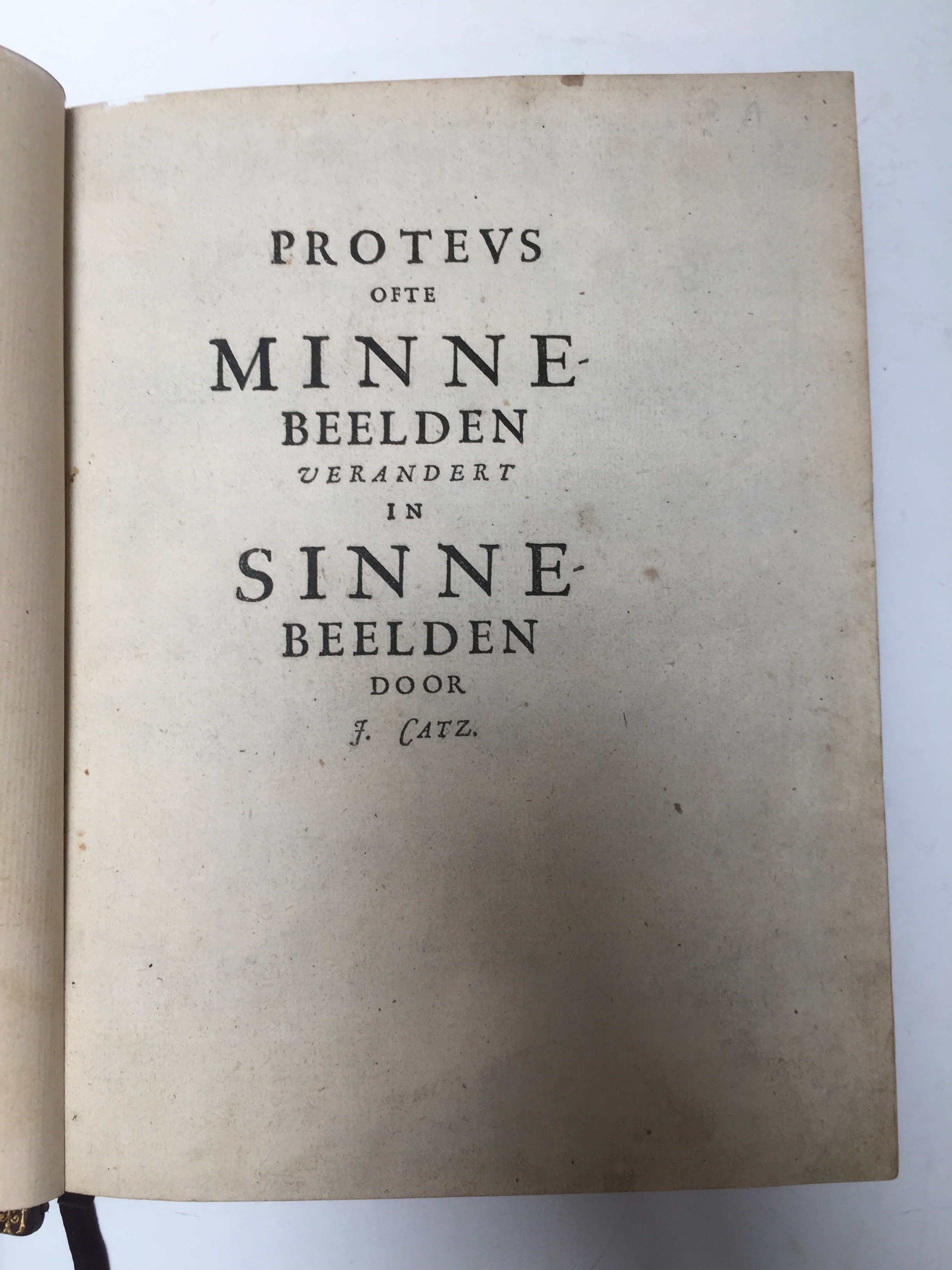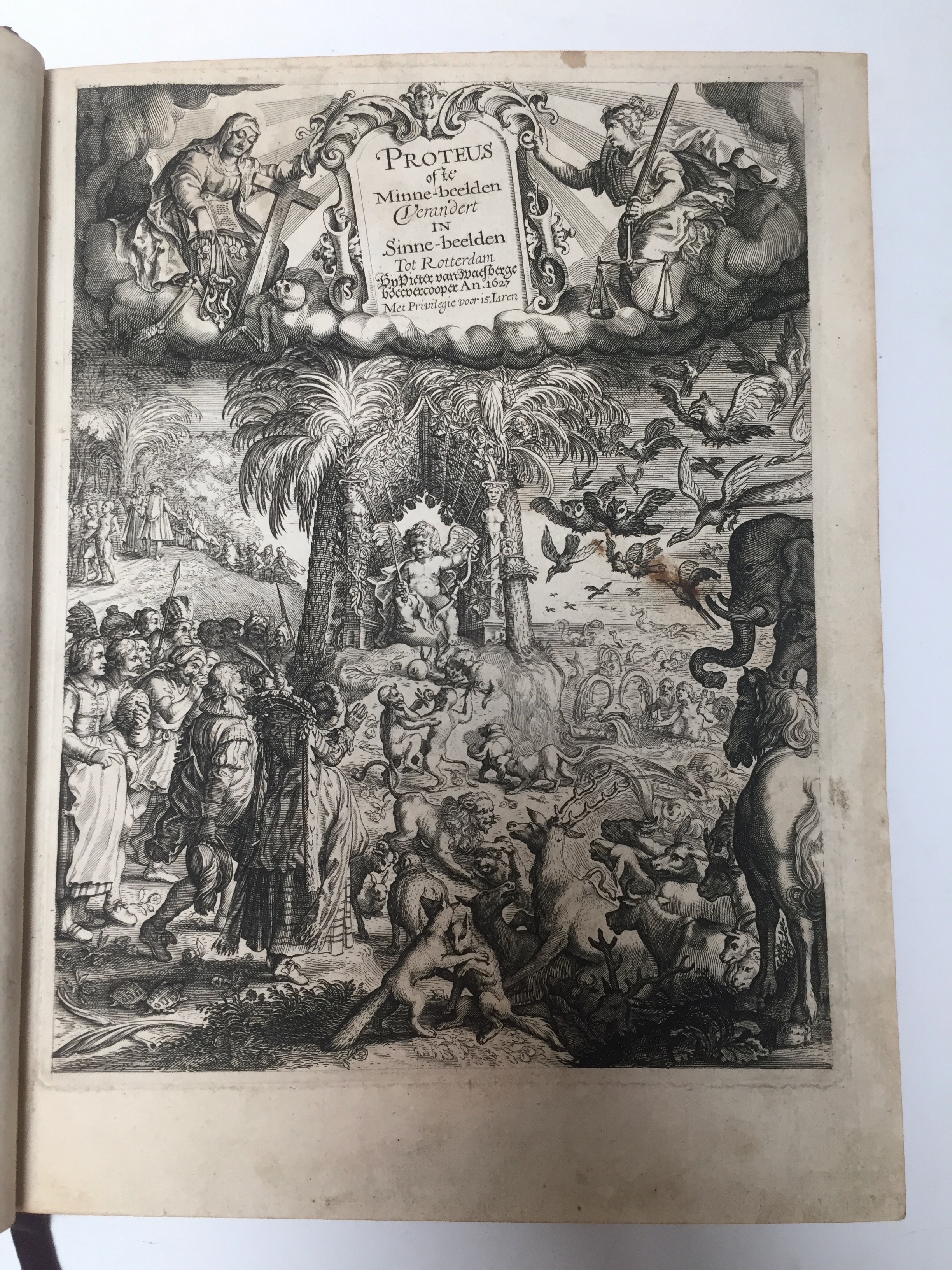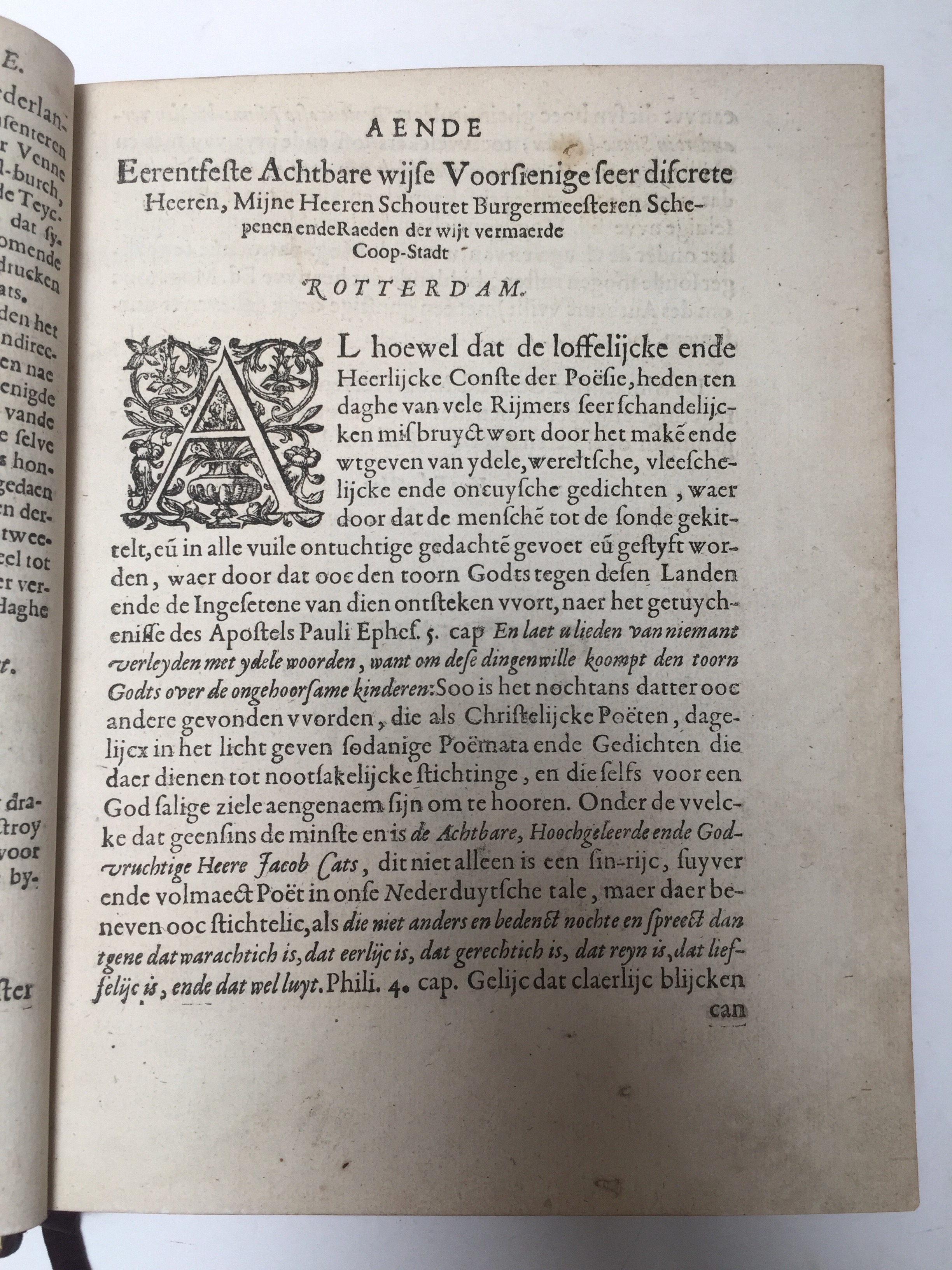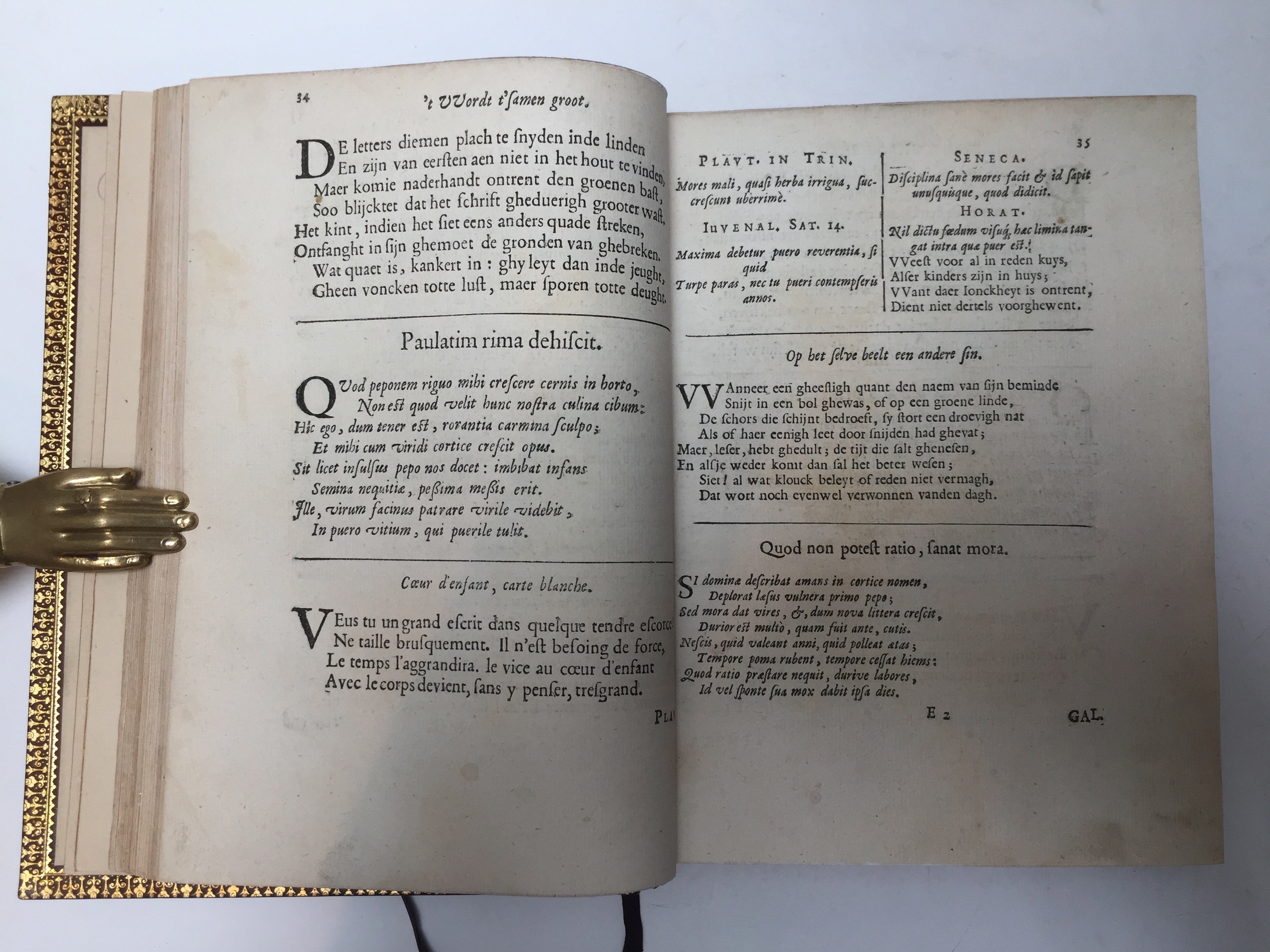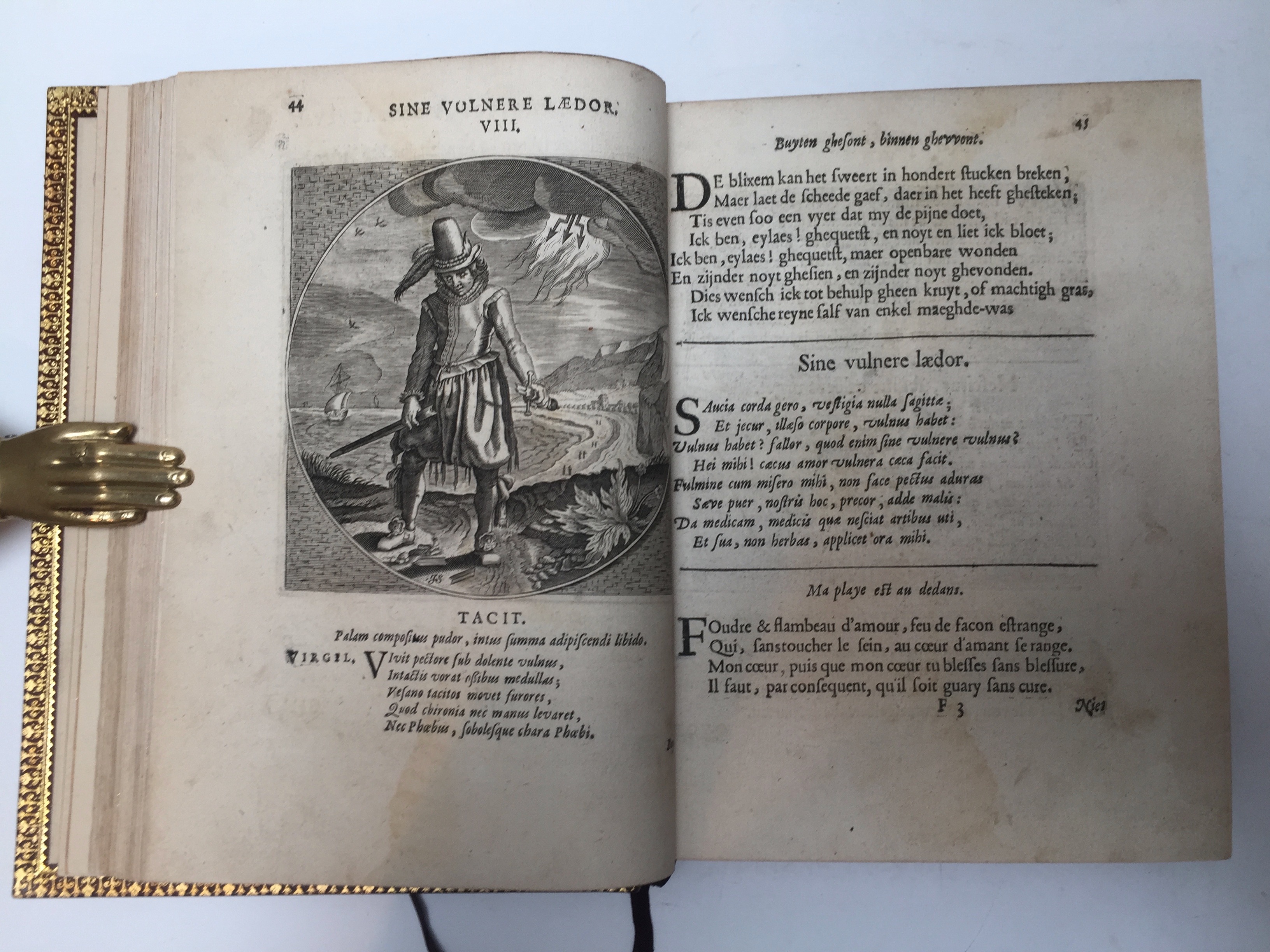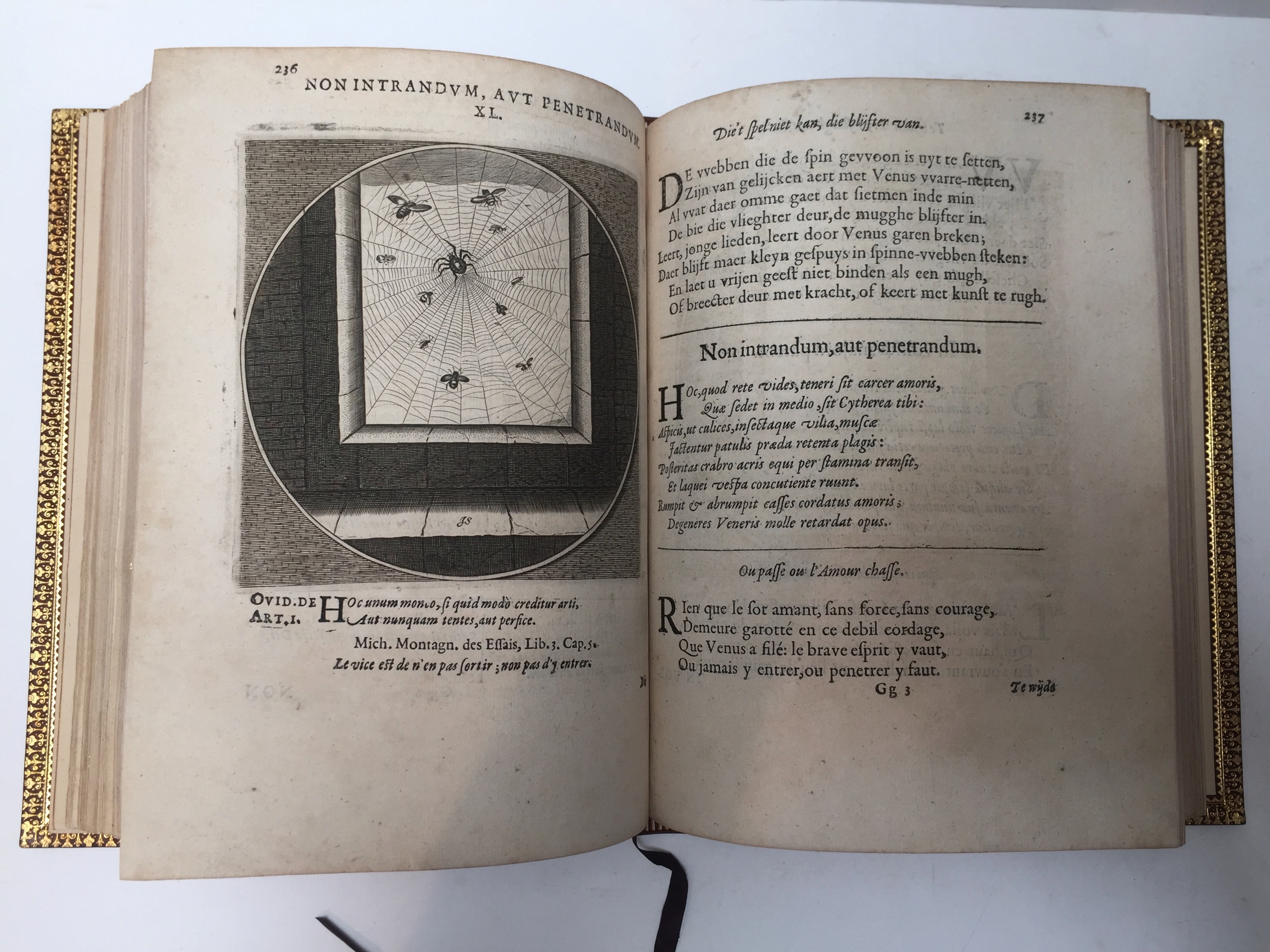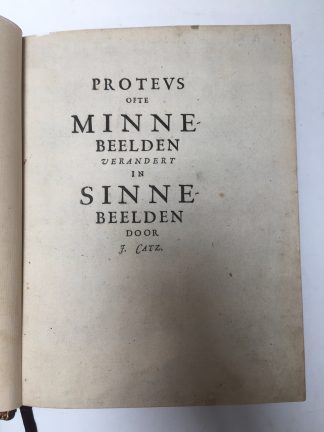CATS, Jacob
Proteus, ofte, Minne-beelden: verandert in sinne-beelden
Rotterdam, P. van Waesberge, 1627£2,500.00
FIRST EDITION thus. 4to. pp. (viii), 35, (i), 315, [i]; 28; 91 (iii); 46, (ii blank); 48 [iii unnumbered ll.] 49-55, [i]. Roman and Italic letter. Fine engraved allegorical title by J. Matham after van de Venne, Sinne- et minne-beelden with 52 engraved emblems by J. Swelinck after A. van de Venne, each accompanied by 5 pages of text in Dutch, Latin and French (partly in verse), with partial English translation in following section, ‘Emblemata moralia’ with 43 engraved emblems, verses in Latin and Dutch, quotations from various sources at foot of each emblem in both works. Galathee with four engravings in text, full page portraits of Galathee and Phyllis in roundels with allegorical borders by Swelinck after van de Venne. Portions of text set in double columns. Woodcut head- and tail-pieces, woodcut initials, engraved armorial bookplate of Allan Heywood Bright, signed ‘Alf Downey’, on pastedown. Light age yellowing, faint waterstain on a few leaves, occasional mostly marginal mark, spot, or thumb mark, very minor dust soiling in places. A very good copy, with excellent dark impressions of the engravings, in handsome modern tan calf, covers bordered with single blind rule, spine with gilt ruled double raised bands, richly gilt in compartments, green morocco title and date labels, gilt lettered, edges gilt ruled, inner dentelles gilt, a.e.g.
First collected edition of these beautifully illustrated emblem books by Jacob Cats, one of the most important author’s of emblem books “whose volumes still form one of the adornments of Dutch houses. Cats took inspiration from proverbs and everyday life, his realistic emblems form a counterpart to genre painting and supply interesting evidence for the history of costume” (Praz p. 86). The work contains, each with separate pagination: Sinne ende Minnebeelden, (an expanded version of “Silenus Alcibiadis”); Emblemata Di Iacobi Catsii, in linguam Anglicam transfusa, (an English verse translation of the foregoing sometimes attributed to Josuah Sylvester); Emblemata moralia et aeconomica, (with illustrations copied from Maechden plicht); the Latin text, with French translation, of the dialogue between Anna and Phyllis from Maechden plicht; Galathee ofte Harder Minne-klachte. Laudatory poems by D. Heinsius, A. Hofferus, J. Arcerius, I. Lyraeus, A. Roemers, I. Luyt, S. de Swaef, L. Peutemans, I. Hobius.
Jacob Cats (1577-1660), seventeenth-century poet, moralist, and statesman, was one of the leading poets in the golden age of Dutch literature. His emblem books, which reflected a stolid Calvinist philosophy, exhorted readers to virtuous and industrial lives. Enormously popular, the books became the source of many well-known maxims and proverbs, giving him the title of “Father Cats,” a fond soubriquet still used by modern Dutch to describe him. He is best known as a poet and author of emblem books—illustrated collections of didactic and moralistic (although clever and often humorous) poetry. They are valued as treasure troves of sociological and historical detail, illustrating not only many facets of daily life in the seventeenth century, but the moral and philosophical ideals of the era as well. Cats’s first book Sinne-en minnebeelden (Portraits of morality and love) was published in 1618, when he was forty years old. The book, divided into three sections, contains prose, poetry, Bible verses, quotations from the classics, and common proverbs in Dutch, French, and Latin. Each illustration was accompanied by three different texts, each of which was designed to give three different—but always instructive—interpretations: the first romantic, the second social, and last religious. This combination of texts, styles, and languages in various degrees of complexity made the book accessible to a broad public. The images for many of Cats’s books were supplied by Adriaan van de Venne. He drew literally hundreds of illustrations for the books, and they were, in turn, reproduced by master engravers.
“Cats is one of the major fingers in emblem literature, exerting a wide influence on later exponents of the genre. He is responsible for two regular emblem books, whose bibliography is complicated for a number of reasons. Firstly they appear under various different names: his first emblem book, Silenus Alcibiadis is also known in Latin as Proteus and in Dutch as Minnelikje, zedelijke en stichtelijke sinne-beelden en gedichten, or sinne- en minne bilden. Often associated with Silenus Alcibiadis is another work which is broadly emblematic, although the text is in dialogue form, Maschden-plicht or Monita amoris virginei. In 1627, the engraving designs for this work were reused in a new emblem book, Emblemata moralia et oeconomica. For all three works, Adriaen van de Venne supplied the designs for the engravings, which were executed by different engravers for different printers, according to the required size and shape, sometimes in mirror image” Alison Adams, Stephen Rawles. ‘A Bibliography of French Emblem Books.’
De Vries 89. Landwehr, Low Countries 118. Praz, p. 300. Adams, Alison. ‘A bibliography of French emblem books of the sixteenth and seventeenth centuries, Nr. F.154.In stock


